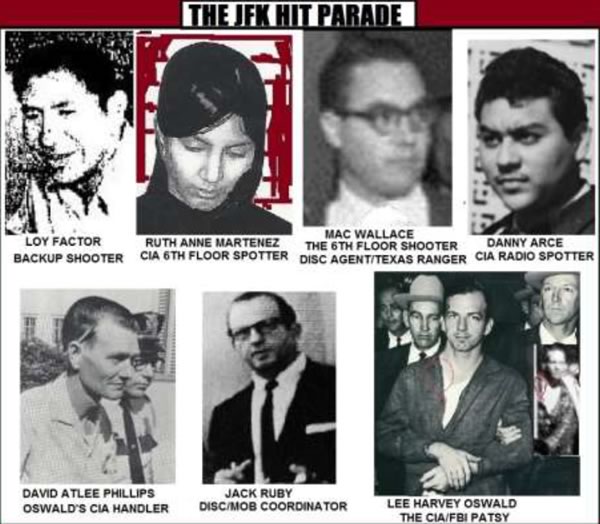The Torbitt Document, also called the Torbitt Memorandum or just “the Torbitt,” started circulating in 1970. It came in the form of a multigenerational photocopy passed among Kennedy assassination researchers during the time of New Orleans district attorney Jim Garrison’s JFK investigation. The Torbitt contained information that came from Garrison’s investigators, but also included material later found important to Garrison.
Its only photographs were of the three tramps picked up in the rail yard at Dealey Plaza, which Garrison had displayed on the Johnny Carson Show on U.S. television. The Torbitt names these tramps as Fred Crisman, Thomas Edward Beckham, and Albert Osborne.
According to the Torbitt, the three were working for a secret group called Defense Industrial Security Command (DISC), through a right-wing front group known as the American Council of Christian Churches.
  |
In the film JFK (1991) Oliver Stone popularized Garrison’s later attempt to bring a prosection in the Kennedy assassination, but the film left out the main thrust of Garrison’s arguments, namely that JFK’s death resulted from espionage within the machinations of the transnational aerospace industry.
At 157 pages, the Torbitt claims to have information on a wide range of subjects, notably another secret spy group known as Division Five of the FBI, and J. Edgar Hoover’s continuing involvement in the assassination and its cover-up. It also details the involvement of Werner Von Braun, deputy NASA administrator, in obtaining the Apollo contract for North American Aviation in 1961.
Von Braun was a Nazi rocket scientist brought to the United States under the auspices of Operation Paperclip who became a leading NASA administrator after the war. He and his associate Walter Dornberger, mentioned in the Torbitt as a directing officer of Bell Aerospace, had used slave prison labor at the Nordhausen underground rocket works in Nazi Germany.
The Torbitt also claims that Ferenc Nagy, the former prime minister of Hungary, actually appears on the Zapruder film of the assassination as the infamous “umbrella man.” The “umbrella man” holds up an umbrella during the shooting sequence, seemingly to coordinate shots from the grassy knoll, the book depository, and the Dal-Tex building.
Congressional investigators later produced a man named Louis Stitt as the umbrella man, who claimed he was trying to use the umbrella as a symbol for Neville Chamberlain (although that explanation seemed farfetched to some investigators).
A now deceased Texas lawyer named David Copeland is credited with having pieced together the Torbitt document and presenting it under the pseudonym of “William Torbitt” in order to defend “honest right-wing conservatives” from accusations that they murdered Kennedy.
In original form, the document contained mismatched, awkward, and missing references as well as odd capitalization and punctuation. It was cleaned up for the Internet and published in book form for the first time in 1996.
Conspiracy researcher Robin Ramsay called it “typical smart-ass CIA stuff to muddy the pool,” while other theories have emerged that it was disinformation planted by the Soviets to destabilize the U.S. government.
The Torbitt Document only had one legal challenge, with the publication of the 1996 book, when David Ferrie (the former airline pilot implicated in Garrison’s investigation of the Kennedy assassination) sued the publisher for defamation. The case was thrown out of court.
